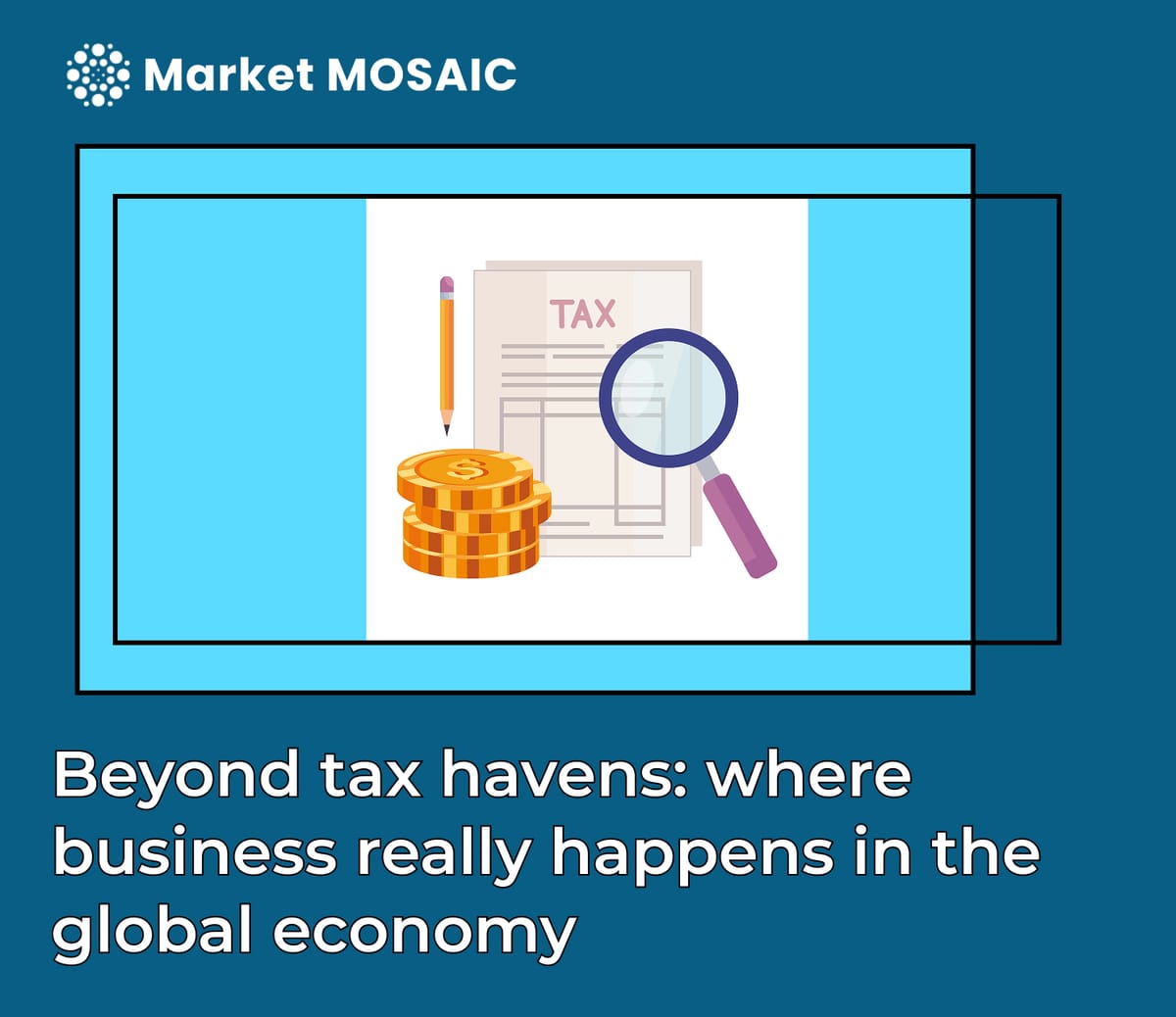Beyond tax havens: where business really happens in the global economy
Tax havens may lower your tax bill, but they don’t build your business. Our analysis of 28,800 companies shows that real operations where firms hire, sell, and grow happen in major economic hubs, not in zero-tax jurisdictions. Growth follows markets, not just low rates.

For years, global companies have used tax havens which are countries or territories that charge little to no corporate tax, to reduce how much they pay in taxes. Places like the Cayman Islands, Bermuda, and the British Virgin Islands have become popular for this reason. These tax-friendly locations also offer financial privacy and simple legal rules, making them attractive to big corporations.
Research shows that nearly 40% of multinational profits are shifted to tax havens every year, costing governments around the world over $245 billion in lost tax revenue. While companies may be registered in these places, their actual business doesn’t happen there.
A new analysis of 28,800 global companies shows that most firms based in tax havens have operations spread out across major economies. On average, a company registered in a tax haven has three offices or branches in other countries, usually where the customers, skilled workers, and infrastructure are. This tells us something important: tax strategy might decide where a company is legally based, but market access decides where the real work gets done. In today’s global economy, knowing the difference matters more than ever.
The Real Hubs of Global Business
So where is business really happening? The data reveals a powerful shift in the geography of business operations. The United States leads the world as the top operational hub, hosting 10,180 secondary business locations for companies originally based in tax havens. The United Kingdom follows with 6,890, and the Netherlands comes close behind with 6,366.These numbers reflect a deliberate strategy. Global companies are setting up where they can tap into consumer markets, digital infrastructure, and skilled labor, not just where taxes are low.
Surprisingly, some countries like Singapore, Hong Kong, and the Netherlands show up on both sides of the equation. They’re popular tax havens and major operational hubs. These hybrid roles signal that favorable tax laws alone aren't enough, being close to demand and talent is just as important. This global pattern is a wake-up call for how we think about international business.
Yes, companies still use tax havens for legal and financial reasons. But the real value creation from product development to customer acquisition happens elsewhere. Increasingly, companies are prioritizing operational flexibility, supply chain strength, and local market access over tax advantages alone.
For business leaders, this signals a broader trend: your corporate footprint needs to follow your strategic priorities, not just dictated by accounting logic alone. As governments crack down on aggressive tax strategies and consumers push for transparency, companies that only exist on paper in certain countries will face growing scrutiny.
Build Where the Value Is
For business leaders navigating global expansion, the message is increasingly clear: optimize for growth, not just tax relief. It’s no longer enough to structure a company for financial efficiency alone. The real competitive edge lies in where and how value is created.
As your company explores new markets, it’s worth asking the hard but necessary questions. Are you building close enough to your most important customers? Are you positioned in regions with the right talent, infrastructure, and regulatory environment to scale effectively? And when operational efficiency becomes a priority, does your company’s structure reflect where the actual work and value happens?
The most successful businesses today aren’t just global in name. They’re strategically local in presence. They don’t abandon smart tax planning, but they pair it with sharper, market-aligned decisions locating themselves in the flow of demand, innovation, and opportunity.





